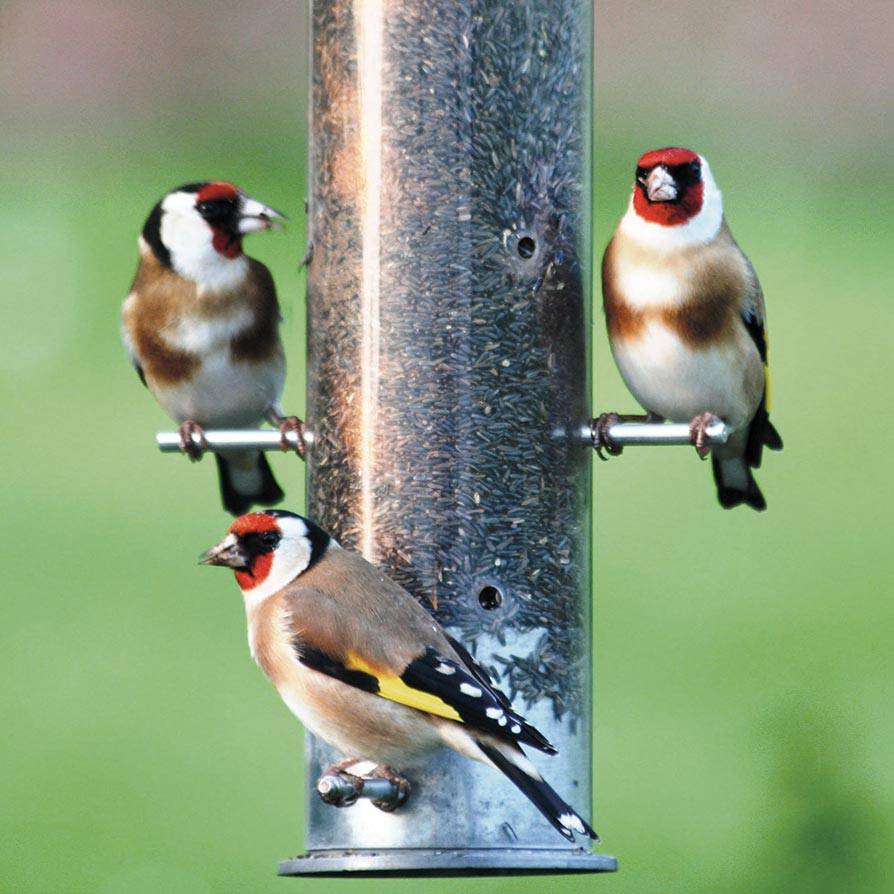It was once portrayed in ancient images of the Madonna and Child, reflecting its symbolism of fertility and resurrection, and later its name a slang word for a wealthy man.
And famed for its distinctive face and colourful plumage, it was once the target for trappers and those who enjoyed them as cage birds.
But whatever its backstory the goldfinch is not only proving to be one of the most resilient species of British bird it is also back in huge numbers.
And nowhere has that success been more evident than here in west Kent.
But the rise and rise in goldfinch numbers is giving one respected bird-watching organisation headaches.
The British Trust for Ornithology has appealed for the public to help in a survey which might help to explain why it is prospering while others are plummeting in numbers.
According to BTO figures, the population has risen by 80 per cent in the decade to 2012 while a 25 year study by the trust and other conservation charities showed an overall increase of 85 per cent.
By contrast, the greenfinch has declined by more than 40 per cent in the past 20 years.
Paul Stancliffe, spokesman for the British Trust for Ornithology said: “We think it’s bird feeders in gardens that are responsible for a huge increase in numbers of goldfinches in areas like west Kent but we can’t be sure.
“How important is the food we put out or which plants we grow? Do they truly prefer nyger seed or is sunflower seed their choice treat? We need your help to find out the answers.”
The BTO is asking birders across the country for their help.
Starting last month, it has launched the Goldfinch Feeding Survey. The study, which runs until February 2016, will look at how important garden bird foods are to the species, what foods it is eating and whether the increase is mirrored by a wider growth in the British population.
Participants are asked to spend a couple of minutes watching goldfinches in their gardens, recording how many are seen and what they are feeding on.
The BTO is also interested in how the birds’ behaviour changes over the winter, so birders who regularly get gold-finches can help by reporting more than once.
BTO Research Ecologist Kate Plummer was able to prove that supplementary feeding has affected the migratory behaviour of wintering blackcaps in the UK. The goldfinch is also a partial migrant.
Click onto www.bto.org and follow the links to the survey.
NUTHATCHES
25 year difference – 115 per cent increase
1995-2013 48 per cent increase (in south-east)
Paul Stancliffe (PS): “With the nuthatch, it seems to be definitely benefiting from a milder climate so the over-winter survival is higher. But there is a link to garden feeding as well as more sympathetic management of woodland where they feed on tree seeds.”
BULLFINCHES
National 25 year – two percent decline
10 year – 23 per cent increase
5 year – 15 per cent increase
PS: “The improvement in bullfinch numbers is tempered by the fact there was a catastrophic decrease from the 1970s until the late 1990s. I am hearing great anecdotal evidence from west Kent that numbers are healthy. Bullfinches were once considered a pest because of their fondness for fruit tree blossoms mbut attitudes have changed, thankfully.”
GREENFINCHES
25 year – 11 per cent decline nationally
20 year – 43 per cent in the south-east.
PS: “They’re a bit thin on the ground in some parts of the UK and in reasonable numbers in others. I spoke to someone recently who said she got dozens into her garden in Kent and her neighbour seven doors up in the same village claims to have seen only one green? nch in three years. This is not untypical and interesting.”
RED KITES
Which have been sighted recently in Pembury, Nettlestead and suburban Tunbridge Wells, have enjoyed an 805 per cent rise nationally in the past 17 years, although this figure is not treated as definitive as the population is tiny.








